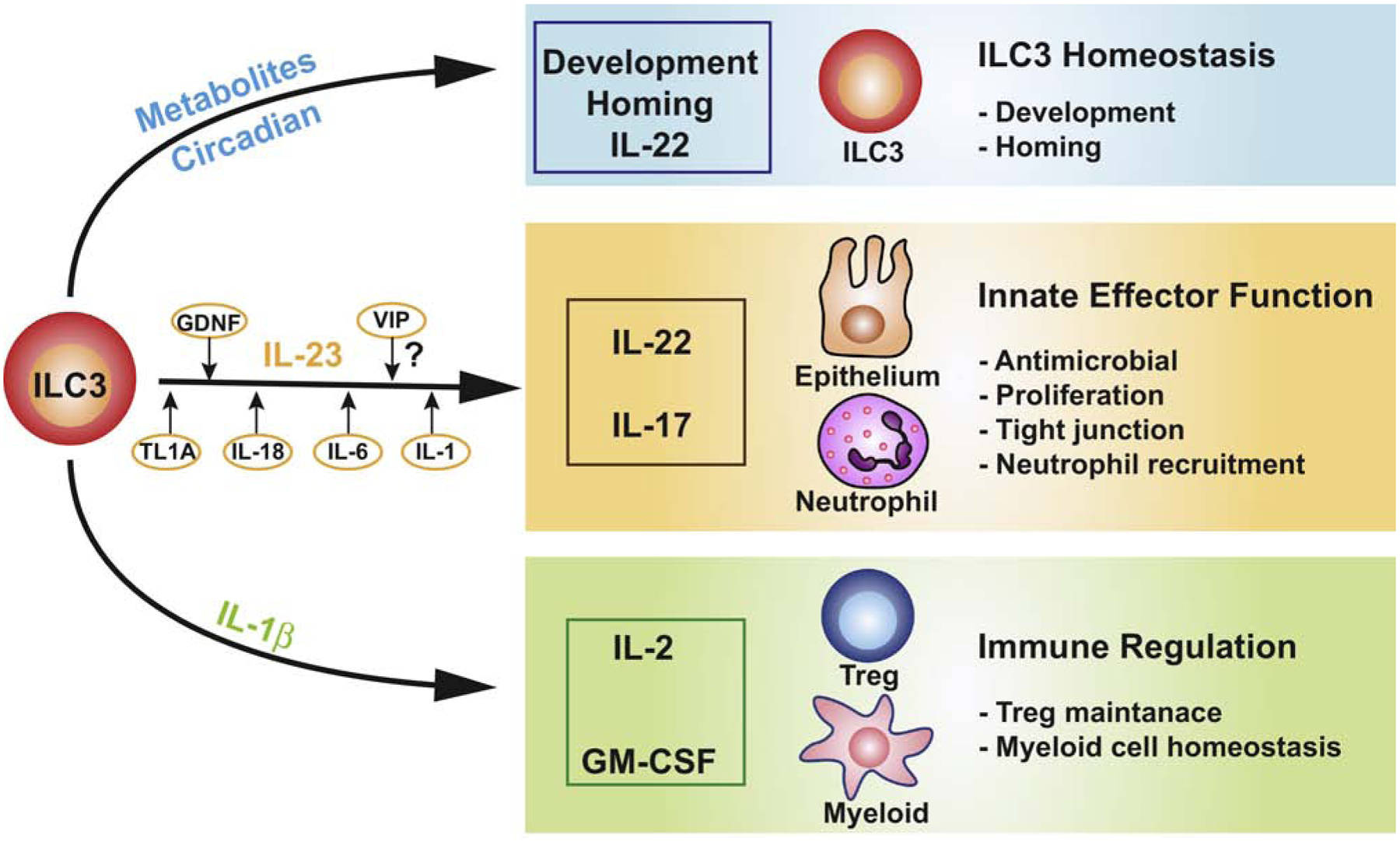Figure 1. Activation signals of ILC3s.

Environmental signals in the GI tract from microbiota, pathogens, neurons, and diet directly or indirectly activate ILC3s. Here, we propose that these can be grouped into three main themes. (1) Metabolites derived from microbiota or the diet (such as oxysterols, SCFAs, AhR ligands and Ras), and circadian rhythms that modulate ILC3 development, homing receptor expression, and IL-22 production, thereby maintaining ILC3 homeostasis. (2) Myeloid-derived IL-23 which serves as a master regulator of IL-22 and IL-17 production in ILC3s, enhancing the antimicrobial defense and barrier integrity of the intestine. Cytokines including TL1A, IL-18, IL-6, and IL-1, and neurotrophic factor GDNF fine-tune IL-22 production. (3) IL-1β released by macrophages, which stimulates IL-2 expression and GM-CSF production by ILC3s, orchestrating immune regulation in the intestine.
